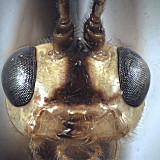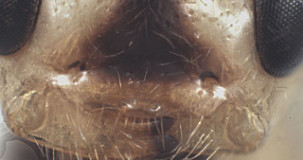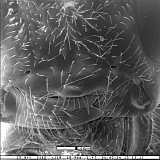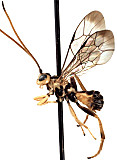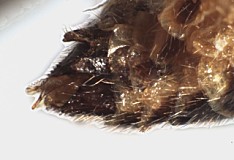Physotarsus claviger Zhaurova, 2009
This species is most similar to P. bonillai Gauld and P. castilloi Gauld in body sculpture and form of the clypeal margin, but is much darker in coloration. Physotarsus claviger is the only described species with extensive dark markings on the mesothorax and a virtually impunctate mesopleuron.
There are no specimens currently determined for this OTU, or those specimens determined for this OTU are not yet mappable.
This material is based upon work supported by the National Science Foundation under Grant Number DEB 0328922 with REU supplement DEB 0723663.
Any opinions, findings, and conclusions or recommendations expressed in this material are those of the author(s) and do not necessarily reflect the views of the National Science Foundation.

